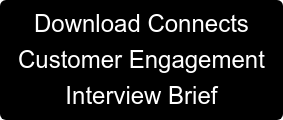Customer engagement (CE) refers to a financial institution’s interaction translating into an end‑user experience. This experience then impacts the financial institution either positively or negatively based on level of empathy, content quality, relevance, and timeliness, and may be subjectively judged based on a perception of how well the institution knows their customer’s or prospect’s identity, needs, issues, financial understanding and product interests.
Historically, customer engagement has been executed through in-person discussions, written correspondence and telephone conversations. However, in today’s digital environment, while customers do still value face‑to‑face service, digital access brings a host of new opportunities both for the customer and for the financial institution. While traditional interactions were typically reactive to customer‑initiated visits or calls, in an expanded digital world, software‑based engagement methods take advantage of a more proactive approach with the ability to capture additional opportunities across various customer journey stages.
There are five key elements of customer engagement:
- Listen to the customer – This presents the greatest challenge to banks today because when a customer is interacting digitally, bankers cannot listen and detect needs or timing signals. However, digitally‑savvy technology provides this capability and gathers valuable, intelligent customer feedback.
- Respond with relevant content - Studies indicate that customers will respond with irritation to what they view as irrelevant content 75 percent of the time. Information must be customer journey-stage specific and be personalized or market‑segment driven to optimize success probability. For example, if the customer is in the awareness stage of the journey, a message might enforce trust and your institution’s proven track record, (perhaps supported with peer group comparisons). During the consideration stage, it is more helpful and appropriate to provide sufficient information to help guide the customer to a decision.
- Engage both reactively and proactively – Financial institutions need to react to customer interaction with appropriate and timely responses. Sensory detection is especially valuable in the awareness and consideration customer journey stages. In the fulfillment stage, it counteracts high industry abandonment rates of over 75 percent by retargeting and re‑engaging. Proactive customer engagement is event‑ or time‑schedule driven. Proactive customer engagement includes educating, scheduling appointments, referring to personal bankers and financial planning professionals, offering appropriate products and services, following up on feedback, and sending nudge reminders and notifications.
- Communicate utilizing the most effective method and media - Selecting the optimal response communication method and media is key to customer engagement success. Communication media options include e‑mail, texts, links, USPS mail, online interactive, internal/external reminders, phone calls, and face‑to‑face human contact. These different methods and types of media all have varying costs and effectiveness, making it critical to balance opportunity cost and probable benefit. Sometimes, an automated text or email response to a straightforward question is appropriate. In other situations, such as a high net worth customer planning for retirement, an appointment with a personal financial planning professional may be the best choice.
- Remember prior interactions - Successful customer engagements are consistent and demonstrate consideration for prior engagements. Enterprise‑wide visibility into contact and engagement history strengthens the ability to “continue the conversation” and deepens the relationship with the customer.
For more information on the elements of customer engagement, view our recent interview brief, ARGO Connects, Customer Engagement.





